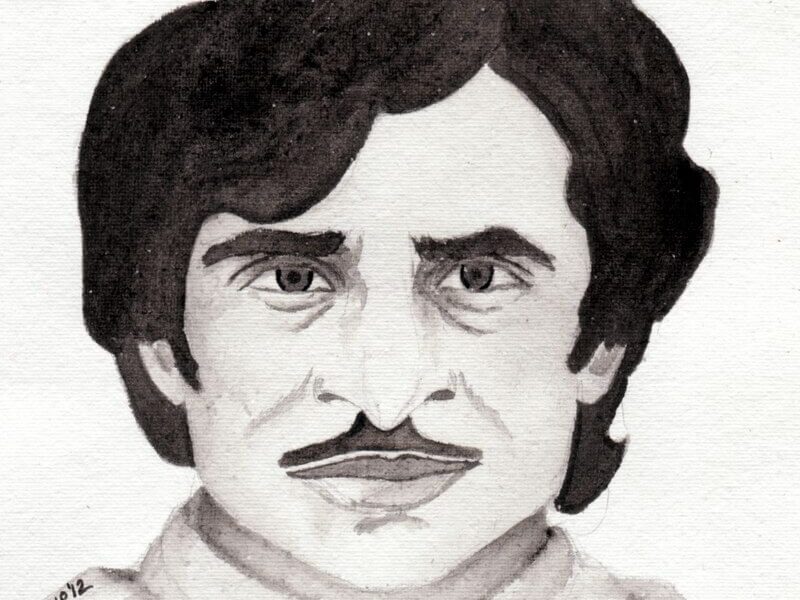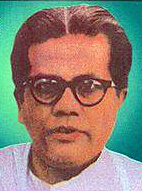Introduction
Jayanta Hazarika, a name that remains deeply etched in the hearts of Assamese Music lovers, was not just a singer but an icon who reshaped the soundscape of Assam. Born on September 20, 1943, he was a singer, songwriter, composer, and music director who revolutionized Assamese music by introducing Western musical instruments and modern musical styles. His unparalleled contributions and timeless melodies continue to inspire generations.
Early Life and Musical Journey
Hailing from a family of illustrious musicians, Jayanta Hazarika was the youngest among six siblings. His elder brother, Dr. Bhupen Hazarika, was a legendary figure in Indian music. Known as ‘Rana’ in his family, he showed signs of musical brilliance from a young age.
His ability to master multiple instruments, including the guitar, mandolin, harmonium, accordion, tabla, and mouth organ, set him apart from his contemporaries. His dexterity on the harmonium, spanning two octaves, left even seasoned musicians in awe.
A Pioneer of Modern Assamese Music
Jayanta Hazarika was the first Assamese musician to captivate urban youth with his compositions. His music resonated with modern sensibilities while maintaining a deep connection to Assamese roots. He followed the path of Jyoti Prasad Agarwala in blending Assamese folk, Indian classical, and Western musical elements to create a unique and soul-stirring sound.
His songs were characterized by unconventional notes and profound lyrical depth. His ability to compose melodies within minutes astonished many, including noted lyricist Hemen Hazarika. His music had an emotional depth that left a lasting impact on listeners.
Contribution to Assamese Cinema
Jayanta Hazarika made his debut in Assamese cinema as an assistant music director in Latighoti (1966), working alongside his brother. He later established himself as an independent music director, composing for several Assamese films:
- Bonoria Ful (1971) – Directed by Atul Bordoloi
- Brishti (1975) – Directed by Deuti Barua
- Dharmakai (1977) – Directed by Bhaben Das
- Niyoti (1978) – Directed by Indukalpa Hazarika
- Natun Asha (1977) – Directed by Prabir Mitra
Unfortunately, due to his untimely demise, he could not complete his work on films like Rongamegh, Enajori, Pohar, and Upapath, where his wife, Manisha Hazarika, later contributed.
The Formation of Sur Bahini
Beyond his commercial success, Jayanta Hazarika was a musician with a purpose. He founded Sur Bahini, a mobile musical brigade dedicated to social welfare. This initiative aimed to aid the poor, helpless, and disaster-affected individuals through music. This noble endeavor set him apart from other musicians, as he used his art as a tool for social change.
Popular Songs That Define His Legacy
Jayanta Hazarika’s songs continue to touch hearts. His deep, melancholic voice and meaningful lyrics made each song an emotional experience. Some of his most popular songs include:
- Aagoli Botahe Kopaale Kolore Paat
- Aaji Pranor Mela Paatisu (Sur Bahini)
- Auto Rickshaw Cholau Ami Duyu Bhai (Duet with Bhupen Hazarika)
- Bohag Hoy Jodi (with Manisha Hazarika)
- Bhoy Nai Bhoy Nai (Sur Bahini)
- Ei Aakakh Bor Bixaal
- Ghuruni Botaahe Bichari Naapale
- Jibonor Logon
- Luitor Xutot Likha Robo Mur
- Natun Purush (with Dr. Bhupen Hazarika)
- Olop Hanhi Olop Oshru
His songs, rich in poetic beauty and musical innovation, remain evergreen in Assamese music history.
Personal Life and Legacy
Jayanta Hazarika married Manisha Sengupta, a talented singer from Kolkata, on August 4, 1969. Their son, Mayukh Hazarika, has carried forward his father’s musical legacy, establishing himself as a respected singer and composer in modern Assamese music.
Despite his short life of just 34 years, Jayanta Hazarika’s impact on Assamese music was profound. His compositions still hold relevance, proving that true artistry transcends time.
Final Years and Untimely Demise
Jayanta Hazarika’s life was tragically cut short on October 15, 1977. His passing left a void in Assamese music that can never be filled. However, his music continues to live on, inspiring new generations of musicians and music lovers alike.
Conclusion
Jayanta Hazarika was not just a musician but a visionary who transformed Assamese music. His ability to blend folk, classical, and Western influences created a unique musical identity that remains unmatched. Through his timeless songs, his pioneering efforts in social service, and his contributions to Assamese Cinema, he left behind a legacy that continues to resonate.
Even today, his melodies evoke deep emotions, reminding us of the golden era of Assamese music. His legacy remains a guiding light for upcoming musicians, proving that true artistry never fades.
FAQ’s:
Q 1. Who was Jayanta Hazarika?
Jayanta Hazarika was a legendary Assamese singer, composer, and music director. He was born on September 20, 1943, and was known for introducing Western musical instruments into Assamese music. His unique style and soulful melodies made him a beloved figure in Assam’s music industry.
Q 2. How was Jayanta Hazarika related to Dr. Bhupen Hazarika?
Jayanta Hazarika was the youngest brother of Dr. Bhupen Hazarika, a legendary musician and cultural icon of Assam. Their family produced many talented artists, and Jayanta followed in his elder brother’s footsteps, making significant contributions to Assamese music.
Q 3. What made Jayanta Hazarika’s music special?
His music had a deep emotional connection with listeners. He blended Assamese folk, Indian classical, and Western elements to create a unique sound. His ability to express emotions through music and lyrics made his songs timeless and relatable.
Q 4. Which musical instruments did Jayanta Hazarika play?
Jayanta Hazarika was a highly skilled musician who could play several instruments, including the guitar, harmonium, mandolin, accordion, tabla, mouth organ, and dumra. His exceptional talent with these instruments added richness to his compositions.
Q 5. What is Sur Bahini, and why is it important?
Sur Bahini was a mobile musical brigade founded by Jayanta Hazarika. It was a group committed to helping the poor and needy, especially those affected by natural disasters. This initiative showed his dedication to society beyond music.
Q 6. Which films did Jayanta Hazarika compose music for?
He worked as an independent music director for five Assamese films: Bonoria Ful, Brishti, Dharmakai, Niyoti, and Natun Asha. He also started composing for a few other films but couldn’t complete them due to his untimely death.
Q 7. What were some of Jayanta Hazarika’s most popular songs?
His most loved songs include Aag Loti Kolapaat, Aaji Pranor Mela Paatisu, Dekha Nai Aage Ene Chobi Dekha Nai, Monor Baatori Bur, and Bhorir Toluwar Pora Jodi. These songs remain evergreen in Assamese music.
Q 8. How did Jayanta Hazarika influence Assamese music?
He modernized Assamese music by introducing Western instruments and unique musical arrangements. His ability to mix folk, classical, and Western styles helped shape the contemporary Assamese music scene, making him an inspiration for many artists.
Q 9. What was the cause of Jayanta Hazarika’s death?
Jayanta Hazarika passed away at the young age of 34 on October 15, 1977. His early death was a great loss to Assamese music, as he had so much more to offer with his talent and creativity.
Q 10. How is Jayanta Hazarika remembered today?
He is remembered as one of Assam’s greatest musical legends. His songs are still played and cherished by music lovers. Many cultural programs and tributes are held in his memory, keeping his legacy alive for future generations.












